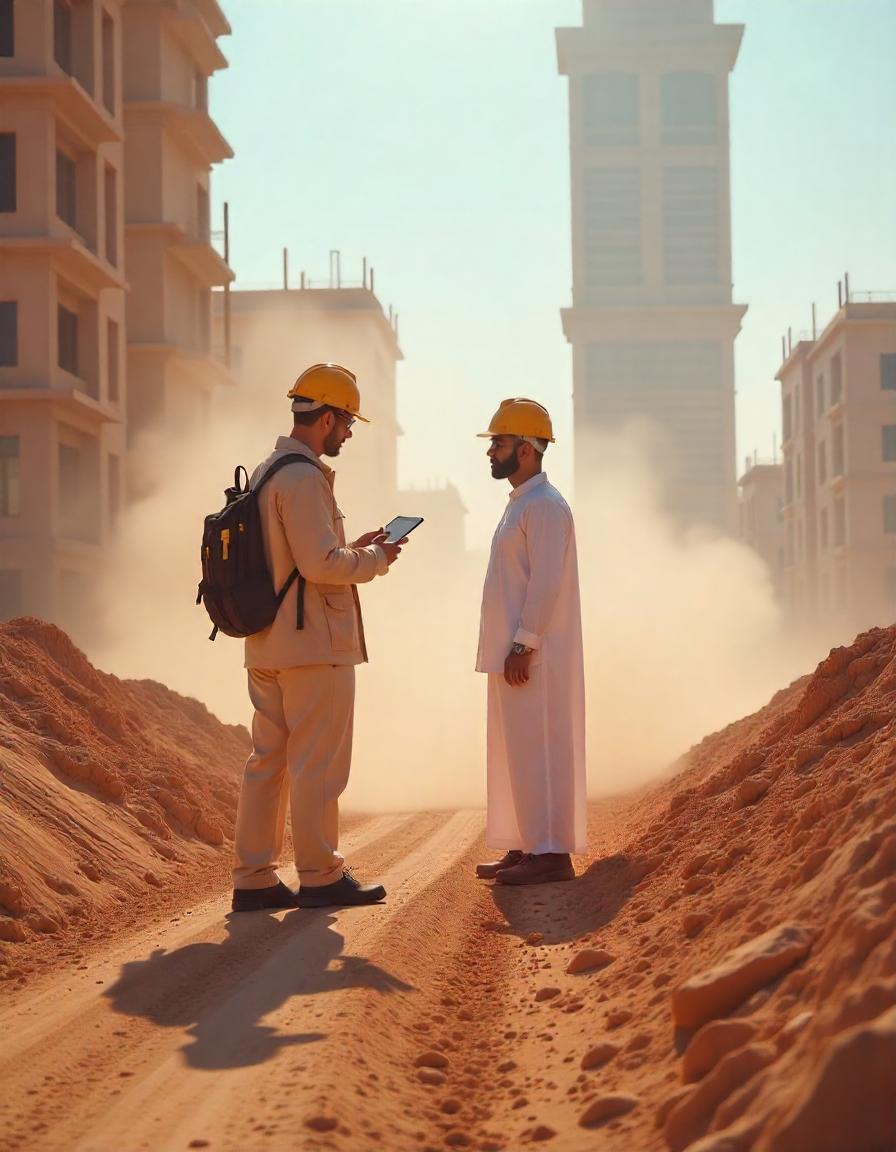
In the dynamic world of construction, it is easy to focus on structures, machinery, and timelines. Yet, one invisible element can drastically impact both health and productivity — the air we breathe. Construction activities produce a range of airborne pollutants that can harm workers and surrounding communities if not properly controlled. That is why air quality monitoring is becoming an essential part of every construction site’s health and safety plan.
In this article, we explore the importance of monitoring air quality on construction sites, the pollutants of concern, monitoring strategies, compliance requirements, and practical steps to protect health while maintaining productivity.
Why Air Quality Matters on Construction Sites
Construction environments are known for generating airborne pollutants through excavation, demolition, transportation, welding, painting, and fuel combustion. These activities release fine dust particles, gases, and chemical vapours into the air.
Unchecked, these pollutants can cause serious health problems such as:
- Lung irritation and chronic respiratory conditions
- Skin and eye irritation
- Headaches and fatigue
- Long term risks such as asthma and cancer
- Reduced oxygen levels in confined spaces
Beyond health, poor air quality can cause equipment malfunction, damage sensitive materials, and lead to regulatory penalties if environmental limits are exceeded. Therefore, air quality monitoring is not just a technical exercise — it is a crucial protective measure.
Common Air Pollutants on Construction Sites
Different activities generate different types of pollutants. Understanding these helps in choosing the right monitoring strategy.
Particulate Matter
Dust and fine particles are the most common air quality concerns. PM10 and PM2.5 refer to particles smaller than 10 and 2.5 microns respectively. These can be inhaled deeply into the lungs.
Sources include:
- Cutting and grinding concrete or brick
- Earthworks and excavation
- Unpaved access roads
- Demolition activities
Diesel Engine Emissions
Most construction equipment runs on diesel fuel. The exhaust contains:
- Carbon monoxide
- Nitrogen dioxide
- Sulphur dioxide
- Ultrafine soot particles
Prolonged exposure is linked to respiratory diseases and even cancer.
Volatile Organic Compounds (VOCs)
VOCs are vapours released from materials like:
- Paints and solvents
- Sealants and adhesives
- Fuels and lubricants
They can cause eye, nose, and throat irritation, as well as more severe nervous system effects.
Silica Dust
When materials like concrete or sandstone are disturbed, they release respirable crystalline silica. Without control, workers are at risk of developing silicosis — an incurable lung disease.
Legal and Regulatory Framework
In many countries, there are specific air quality standards and exposure limits set by regulatory authorities. These include occupational exposure limits for dust, gases, and chemical compounds. Failure to comply can result in:
- Project shutdowns
- Fines and legal action
- Reputational damage
- Compromised worker safety
Construction site managers must be familiar with national environmental and occupational health regulations and ensure that all air quality limits are respected.
How Air Quality Monitoring Works
Air quality monitoring involves the use of instruments that measure the concentration of pollutants in real time or through sampling over time. Monitoring helps detect risks early and enables timely control measures.
Types of Monitoring
- Fixed Monitoring Stations
These are set up at strategic locations around the site to provide continuous data on air quality. Ideal for large or high risk sites. - Portable Devices
Handheld air monitors allow site supervisors to perform spot checks across different zones. They are also useful for confined spaces or enclosed environments - Personal Exposure Monitors
Worn by workers, these track individual exposure to specific pollutants during their shift. - Environmental Monitoring Systems
Advanced systems collect weather data such as wind speed and direction, helping to predict dust movement and dispersion patterns.
Key Parameters to Monitor
A well designed air quality monitoring program should focus on:
- PM10 and PM2.5 levels
- Carbon monoxide concentration
- Nitrogen dioxide and sulphur dioxide levels
- VOC concentration
- Relative humidity and temperature (as they influence pollutant behaviour)
- Wind direction and speed
Air Quality Control Strategies
Monitoring alone is not enough — the data must be used to inform practical control measures. Effective strategies include:
Dust Suppression Techniques
- Water spraying on dusty surfaces
- Using dust suppressants on roads and haul routes
- Covering stockpiles with tarps or netting
- Limiting vehicle speed on unpaved surfaces
Emission Control from Equipment
- Use modern, well maintained machinery with low emissions
- Avoid idling of engines
- Use electric or gas powered tools where possible
Engineering Controls
- Enclosing high emission processes
- Using extraction and filtration systems in closed environments
- Creating windbreaks and barriers around the site perimeter
Administrative Controls
- Scheduling high emission activities during low traffic hours
- Rotating workers to limit prolonged exposure
- Conducting regular training on air quality awareness
Personal Protective Equipment (PPE)
When other controls are not enough, provide appropriate respiratory protection such as:
- Dust masks for low risk tasks
- Half face or full face respirators for higher exposure levels
Training and Awareness
A successful air quality management plan depends on everyone understanding their role. Workers should be trained to:
- Recognize signs of air pollution
- Report malfunctioning equipment or dust events
- Use PPE correctly
- Follow best practices during high risk activities
Supervisors should be empowered to make real time decisions based on monitoring data and weather forecasts.
Technology Trends in Air Quality Monitoring
Technology has made monitoring more accurate, accessible, and affordable. Modern innovations include:
- Cloud connected sensors providing live data to mobile devices
- Integration with weather and traffic control systems
- Predictive analytics using historical data to plan better
- Automated alerts when thresholds are exceeded
These advancements are helping to move from reactive to proactive air quality management on construction sites.
Conclusion: Clean Air Is Smart Construction
Air quality monitoring on construction sites is no longer optional — it is essential. By proactively measuring and managing air pollutants, contractors can create safer, healthier environments for workers, reduce complaints from surrounding communities, and stay compliant with environmental laws.
The air may be invisible, but its impact is very real. With the right approach, we can ensure that construction sites are not just building the future, but doing so responsibly, sustainably, and with care for the people who make it all happen.
 Athy Ricky
Athy Ricky